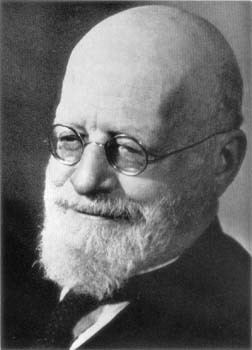Nationality German | Name Sebastian Finsterwalder | |
 | ||
Born 4 October 1862Rosenheim, Germany ( 1862-10-04 ) Known for photogrammetryFinsterwaldersche fields method Notable awards Helmert commemorative medallion for excellence by the German Association of Surveying Spouse Franziska Mallepell (d. 1953) (m. 1892) Died December 4, 1951, Munich, Germany Institution Technische Universitat Munchen Fields Mathematics, Geometry, Surveyor, Topography, Geology | ||
Alma mater University of Tubingen | ||
Sebastian Finsterwalder (4 October 1862 – 4 December 1951) was a German mathematician and glaciologist. Acknowledged as the "father of glacier photogrammetry"; he pioneered the use of repeat photography as a temporal surveying instrument in measurement of the geology and structure of the Alps and their glacier flows. The measurement techniques he developed and the data he produced are still in use to discover evidence for climate change.
Contents
- Life
- Research and Applications of Photogrammetry
- Aerodynamics
- Glacier Flow in the tztal Alps
- Other Contributions
- Honours
- Publications
- Literature and links
- References

Life
Sebastian Finsterwalder was born 4 October 1862 in Rosenheim, son of Joh. Nepomuk Finsterwalder, a master baker from Lehrers-S aus Antdorf, Upper Bavaria, and Anna Amann of Rosenheim. He died 4 December 1951 in Munich). He was a Bavarian mathematician and surveyor. In 1892 he married Franziska Mallepell (d. 1953) from Brixen, South Tyrol. Their two sons worked in similar fields; Richard Finsterwalder (1899-1963), Professor at the Technical University in Hanover and Munich, and Ulrich Finsterwalder (1897-1988), a civil engineer.
A keen mountaineer, Finsterwalder became interested, through the influence of his friend E. Richter, in alpine fossils as indicators of the geology and structure of the Alps and their glaciers. His desire for accurate, but also less costly, motion measurements on glaciers led him to glaciological applications of photogrammetry in geodesy.
In 1886. aged 24, he received his doctorate from the University of Tübingen, under the guidance of the algebraic geometer Alexander von Brill. Finsterwalder observed that Rudolf Sturm's analysis of the "homography problem" (1869) can be used to solve the problem of 3D-reconstruction using point matches in two images; which is the mathematical foundation of photogrammetry.
Finsterwalder pioneered geodetic surveys in the high mountains. At the age of 27 years he conducted a first glacier mapping project at Vernagtferner in the Ötztal Alps, Austria.
Research and Applications of Photogrammetry
Following the 1878 work of Italian engineer Pio Paganini and others, Finstenwalder advanced methods for reconstruction and measurements of three-dimensional objects from photographic images.
He was appointed professor at the Technical University of Munich in 1891, succeeding his teacher, A. Voss, at the Department of Analytical Geometry, Differential and Integral Calculus (remaining at the university for forty years until 1931). The next year, he married, and completed the first recording of the Bavarian glacier in Wettersteingebirge and the Berchtesgaden Alps.
He applied the technique of plane table photogrammetry in addition to a conventional geodetic survey, assisted by the novel lightweight, accurate phototheodolite that he had developed for high-mountain applications. The device was based on the prototype phototheodolite developed by Albrecht Meydenbauer (1834-1921) for architectural applications. From 1890 Finsterwalder also employed aerial photography, reconstituting the topography of the area of Gars am Inn in 1899 from a pair of balloon photographs using mathematical calculations of many points in the images.
In 1897 Finsterwalder addressed the German Mathematical Society, and he described some of the results of projective geometry he was applying to photogrammetry. His theory of large triangle meshes became known as the "Finsterwaldersche fields method" (1915). His analytical approach was laborious however, prompting development of analogue instrumentation with stereo measurement permitting faster optical/mechanical reconstruction of the photographic data arrays to determine object points. This was assisted by new technology; Carl Pulfrich's stereocomparator (1901) and Eduard Ritter von Orel's stereoautograph (1907), both instruments built by the company Carl Zeiss.
In 1911 he took over the chair of descriptive geometry, turning down offers of appointment from Vienna, Berlin and Potsdam.
Aerodynamics
Felix Klein commissioned Finsterwalder while the latter was professor of mathematics at the Munich polytechnic, to write on aerodynamics for his Enzyklopädie der mathematischen Wissenschaften mit Einschluss ihrer Anwendungen (EMW) (tr. 'Encyclopedia of mathematical sciences including their applications'). The article, which he submitted in August 1902, more than a year before the Wrights achieved powered flight is thus prescient in its insights into the mathematics behind this new field of engineering. Finsterwalder also worked with Martin Wilhelm Kutta (1867-1944) at the Institute in Munich to devise formulas relating to the lift on an aerofoil in terms of the circulation round it. Kutta's habilitation thesis, completed in the same year, 1902, with which Finsterwalder assisted, contains the Zhukovsky-Kutta (or Joukowski-Kutta) theorem giving the lift on an aerofoil.
Glacier Flow in the Ötztal Alps
In 1922 Finsterwalder mapped the topography of the Ötztal Alps focusing on two glaciers, i.e. Gepatschferner and Weißseeferner, using stereophotogrammetry. During this work he discovered Ölgruben rock glacier and the rock glacier north of Krummgampenspitze. In 1923 and 1924 Finsterwalder measured a flow velocity profile across Ölgruben rock glacier. Because of Finsterwalder's efforts, Ölgruben rock glacier became the subject of a notably extended, longitudinal study of flow velocity with high value in climate research,with repeat surveys undertaken by Wolfgang Pillewizer in 1938, 1939, and 1953 using photogrammetry, and which is still ongoing, employing modern satellite-based positioning techniques. His son Richard assisted in the mapping project in the Ötztal Alps and went on to advance his father’s studies.
Other Contributions
Under his leadership the Bavarian International Commission for Geodesy undertook precise gravity measurements with relative gravimeters throughout Bavaria.
